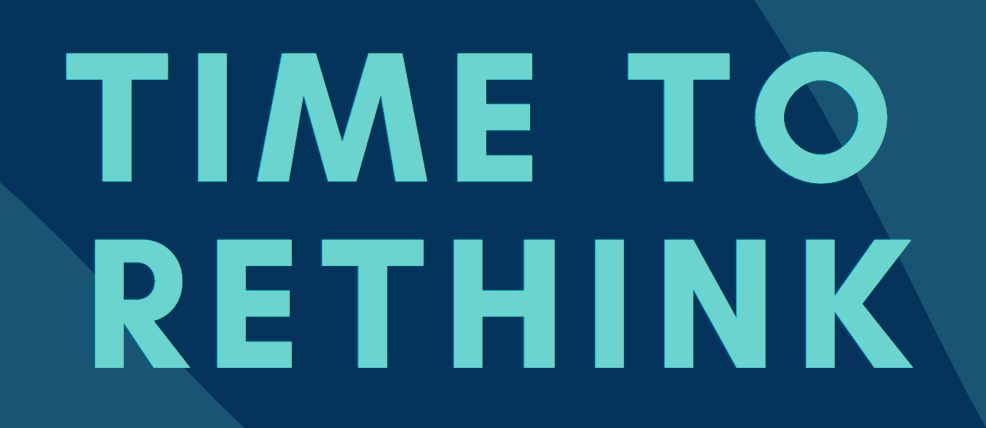Can the Southwest Survive With Less Water?
"Sometime next month, for the first time, the federal government is likely to declare a water shortage at Lake Mead.
This vast turquoise reservoir, formed in 1935 when the Hoover Dam corked the Colorado River in Arizona and Nevada, is part of a broader network of natural and artificial aqueducts and dams that supplies water to 40 million people and homes, farms, manufacturers and businesses across several states, tribal lands and parts of Mexico. Lights stay on in Phoenix, Tucson, Las Vegas, San Diego, Los Angeles and other Southwestern cities because Hoover Dam hydropower helps generate the region’s electricity.
But the lake is shrinking, faster and sooner than hydrologists and other experts predicted. A stark white band of dry rock, 120 feet wide, circles its craggy perimeter, marking how far the water line has fallen in the ongoing drought. Locals call it the “bathtub ring.”
Walking Lake Mead’s shoreline in the blistering July sunshine offers other reminders of the receding water. Swimmers gather in an area that they call a beach but is really an exposed portion of the reservoir’s rocky floor — some distance from the place further inland where people used to sunbathe. Marina ramps are closed because the water isn’t high enough to properly launch a boat. Formerly submerged infrastructure supporting enormous “straws” that suck water from the reservoir to be delivered to Las Vegas now tower above the lake. Saddle Island, home to a major water treatment plant, is so parched, it’s no longer an island — it’s a peninsula.
Lake Mead and its troubled fellow reservoir upriver, Lake Powell, symbolize a broader threat. The entire Southwest has been baking in a 21-year drought and in this summer’s successive heat waves, which have also roasted Northwestern states.
> How communities and businesses everywhere live with this change — how they adjust to the idea that water is a precious, waning resource rather than an abundant, inexpensive commodity — is being tested in the Southwest. Dry, sizzling summers and warmer winters that restrict water supplies may now be the norm, courtesy of a permanently altered climate. . .
> Interlocking legal agreements, built on earlier pacts dating back at least a century and layered atop a hodgepodge of local rules, govern how Colorado River water is shared among seven states, Native American nations and Mexican territories. In 2019, after years of thorny negotiations over a diminishing water supply, states and the federal government signed the Drought Contingency Plan, which lays out how water will be doled out if a shortage occurs.
> 'Tier 1” looms over conversations about drought in the Southwest in the same way that “rolling blackouts” haunts certain conversations elsewhere. Tier 1 has entered the Southwestern argot because it is the benchmark that will trigger a formal declaration of a water shortage, expected in August.
> Tier 1 also foreshadows further belt-tightening. It suggests that a region of deserts and mountains that has spent a century growing explosively might have to consider downsizing — or, perhaps, right-sizing.
Tier 1 will most heavily impact Arizona, due to legal and political peculiarities stemming from water battles of the past. Other Colorado River basin states will face more onerous rationing regimes only when further DCP tiers are reached. Then, Arizona’s burden will worsen as well, but even Tier 1 inflicts a severe blow. The state will lose nearly a fifth of the water it has been drawing from the Colorado River.
It has decided that farmers and ranchers will absorb the entirety of this cut, temporarily sparing municipalities and industry. Farmers in Pinal County, an Arizona breadbasket, expect deliveries from the Colorado River to drop by half next year and disappear altogether in 2023.
> Farms need outsized amounts of water to grow crops. During wet years, so much water could be channeled to central Arizona that it was possible, if inadvisable, to grow cotton, corn, barley and alfalfa in the desert. That may no longer be the case.
> But farms aren’t the only businesses that need water. Cutting-edge factories, including semiconductor plants, require millions of gallons daily. Two heavyweights in the chip industry, Intel Corp. and Taiwan Semiconductor Manufacturing Co., plan to build major plants in Arizona, and those operations will be water-dependent, too. Real estate developers, which routinely unveil master-planned communities in fast-growing Phoenix suburbs and in the Sonoran Desert, also need water, and some groundwater supplies are already strained.
> Arizona has spent decades preparing for droughts, and the state believes it can use water-sharing agreements to aid farmers when the first big cutback happens. Chipmakers have become deft water recyclers and say that they can work with a more limited supply.
> Developers claim to be observing strict local regulations on sustainable water usage. But even experts who have spent their careers tackling water-management issues in the state recognize why this moment resonates.
“We’re about to declare the first water shortage ever on the Colorado River,” says Chuck Collum, a program manager for the Central Arizona Project, an agency that delivers Lake Mead water to the state. “It will be emotional to be here when that happens.”
“This isn’t just an Arizona problem. This is a Colorado River basin problem,” he adds. . .
> Court battles between Arizona and California over water rights took decades more to settle and left the federal government as the arbiter of allotments in the region. But the 1922 compact allowed the basin states to jointly tame the river, ultimately with the Hoover Dam. The river was diverted, the dam’s 726-foot concrete wedge filled the canyon, and the water was allowed to rush back in.
> For the first time, the Colorado River was being directed and managed with a giant faucet. Lake Mead became so voluminous that its weight deformed the earth’s crust and in the 1930s triggered more than 600 minor earthquakes. Like dams before and after, Hoover Dam also disrupted plant, marine and wildlife habitats; unsettled sediment deposits; and created reservoirs that emitted methane and other greenhouse gases.
All that water also enabled the extraordinary manufacturing, agriculture, technology and residential boom in the Southwest. The water’s eventual decline, which started to be felt at the turn of this century, stands to have an equally powerful impact. . .
> 
> "We are not in a state of panic. We’re prepared. We knew it was coming and we’ve been storing water underground,” says Sharon Megdal, director of the University of Arizona Water Resources Research Center. “But the situation is bad and it’s growing worse sooner and faster than we thought it would. Some aren’t going to be able to continue business as usual. They will have to adapt.”
> Arizona has also spent the past 25 years storing about 3 trillion gallons in a network of “water banks” — a supply big enough, the state says, to serve Phoenix for 30 years. Part of that supply was created through artificial above-ground pools that gradually seep through the soil and “recharge” subterranean aquifers.
> But Arizona’s regulatory apparatus isn’t airtight. Some landowners and farmers aren’t bound by its rules and can pump groundwater at will. And there are no uniform legal guidelines around various uses of surface water and groundwater.
While Arizona now uses less groundwater than it did decades ago, waning supplies from Lake Mead have forced it to reconsider that strategy. As the shortage deepens, water banking is likely to be eliminated. Sprawling suburban subdivisions depend on groundwater stocks that will be difficult to replenish. The prospect of aggressively tapping other groundwater supplies in rural areas to make up the difference has sparked a heated debate about environmental impacts — and basic fairness.
A group of University of Arizona researchers who in 2017 wrote a detailed analysis of the state’s water usage found that some of the lofty conservation goals established in 1980 won’t be met, and that the balance between extracting and replenishing groundwater has fallen dangerously out of whack.
> Water is still sold at rock-bottom rates — lower than the cost of electricity — and to facilitate rationing and responsible usage, prices will need to rise. Israel, another desert community, offers a good model for how to orchestrate such a pricing shift. A lot of residential water in states like Arizona is used outdoors, to water plants and trees and fill swimming pools, and this offers an easy target for cutbacks. Seawater desalination plants and wastewater recycling facilities have sprung up around the region. Greater public education about water usage and availability... — would also help.







No comments:
Post a Comment